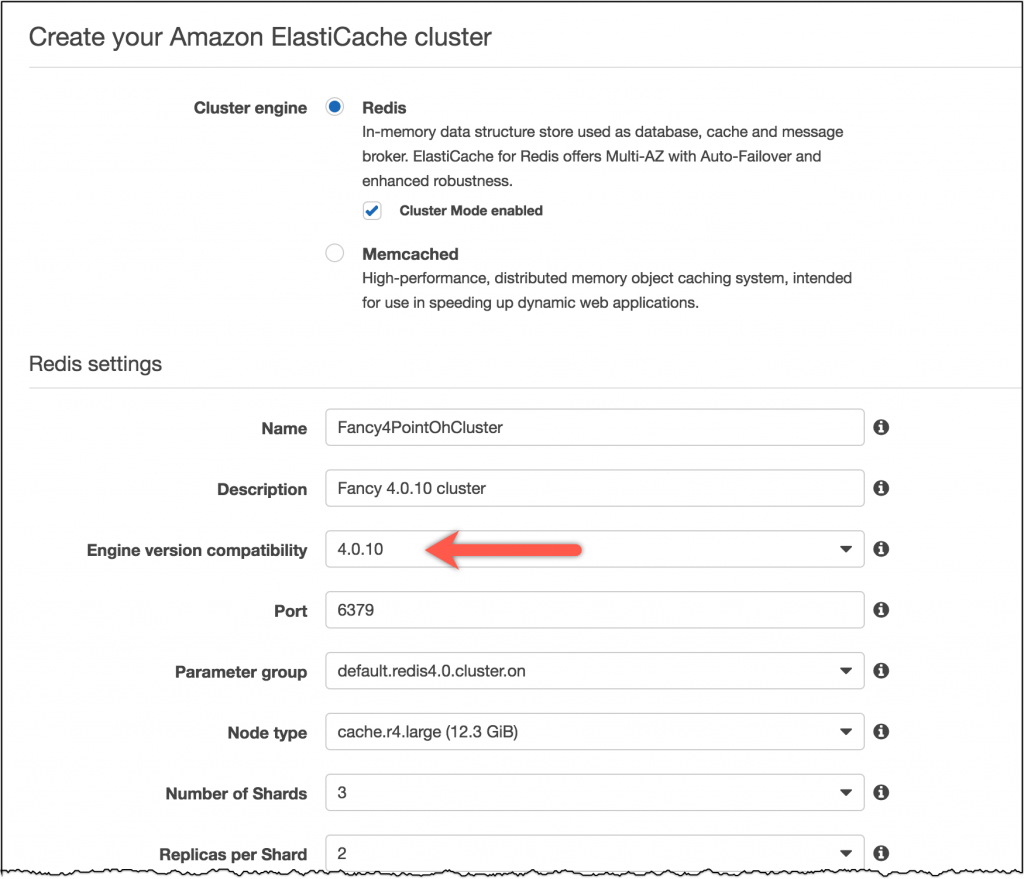AWS News Blog
New – Redis 4.0 Compatibility in Amazon ElastiCache
Amazon ElastiCache makes it easy for you to set up a fully managed in-memory data store and cache with Redis or Memcached. Today we’re pleased to launch compatibility with Redis 4.0 in ElastiCache. You can now launch Redis 4.0 compatible ElastiCache nodes or clusters, in all commercial AWS regions. ElastiCache Redis clusters can scale to terabytes of memory and millions of reads / writes per second to serve the most demanding needs of games, IoT devices, financial applications, and web applications.
Launching a Redis cluster in the AWS Management Console or AWS Command Line Interface (AWS CLI) remains simple. I’m going to create a small cluster to play with the new Redis 4.0 features, to use the new version I just select a 4.0 release in “Engine version compatibility”. This will launch, at the time of this writing, a 4.0.10 compatible cluster.

New Features
- Least Frequently Used (LFU) cache eviction policy – Redis 4.0 launched with a number of caching improvements including a new LFU cache eviction algorithm, customers may see better performance from LFU over Least Recently Used (LRU). Antirez’s blog has a deep dive on some of the changes.
- Asynchronous FLUSHDB, FLUSHALL, and UNLINK – using the ASYNC option of the FLUSH commands allows users to make a non-blocking call to clear databases. Using UNLINK instead of DEL allows users to asynchronously delete individual keys. There’s also the SWAPDB command which can be useful to atomically switch between entire datasets.
- Active memory defragmentation – Redis can now defragment memory while running which allows more efficient utilization of memory for customer data. This is off by default but you can modify the parameter group to turn it on. Customers should probably only turn it on if they’re running into fragmentation issues.
- Online Cluster Resizing and Encryption in transit – with Redis 4.0 you can now use encryption in transit and online cluster resizing at the same time. With Online Cluster Resizing you can add and remove shards from a running cluster to dynamically scale-out or scale-in your Redis cluster and adapt to changes on demand. Previously this feature wasn’t able to be used with encryption in transit but now you can use both features simultaneously. This helps with workloads that require encryption for compliance purposes.
- MEMORY commands – a whole new family of memory commands: DOCTOR, USAGE, STATS, PURGE, and MALLOC-STATS are available for gathering statistics or usage information on your redis nodes. Running
MEMORY DOCTORwill tell you about any memory issues (and it will give you a nice sci-fi easter egg if no problems are detected). TheMEMORY STATScommand will return some useful statistics like “bytes-per-key” that aren’t available in the INFO commands.

Additional Resources
You can find more information in the documentation and in antirez’s blogs/release notes.
We hope customers can take advantage of these new features right away. As always, feel free to leave any comments below or reach out to us on twitter!
– Randall